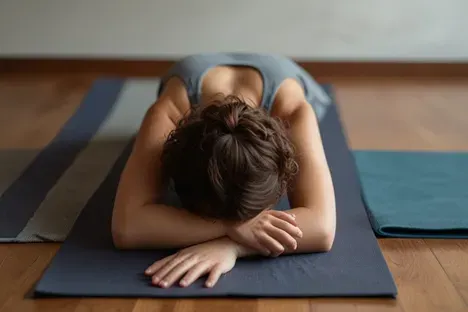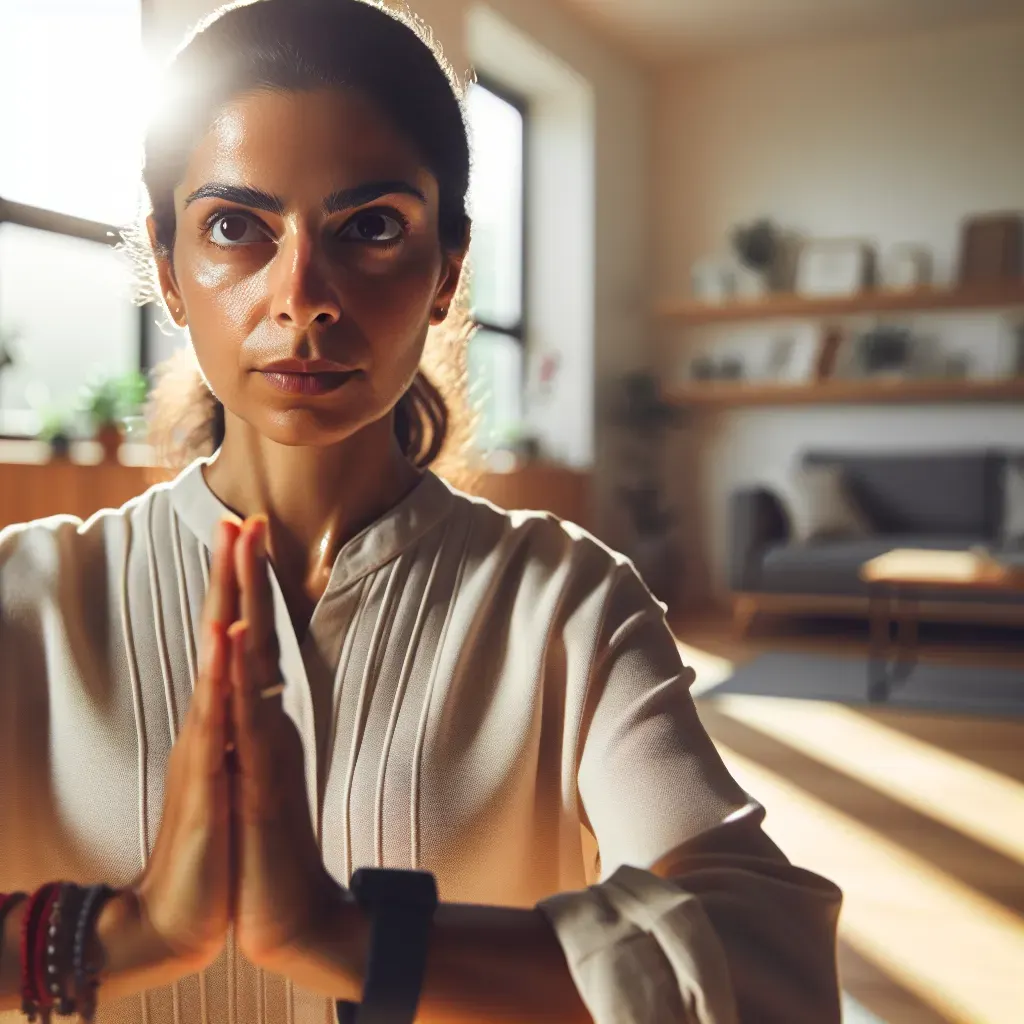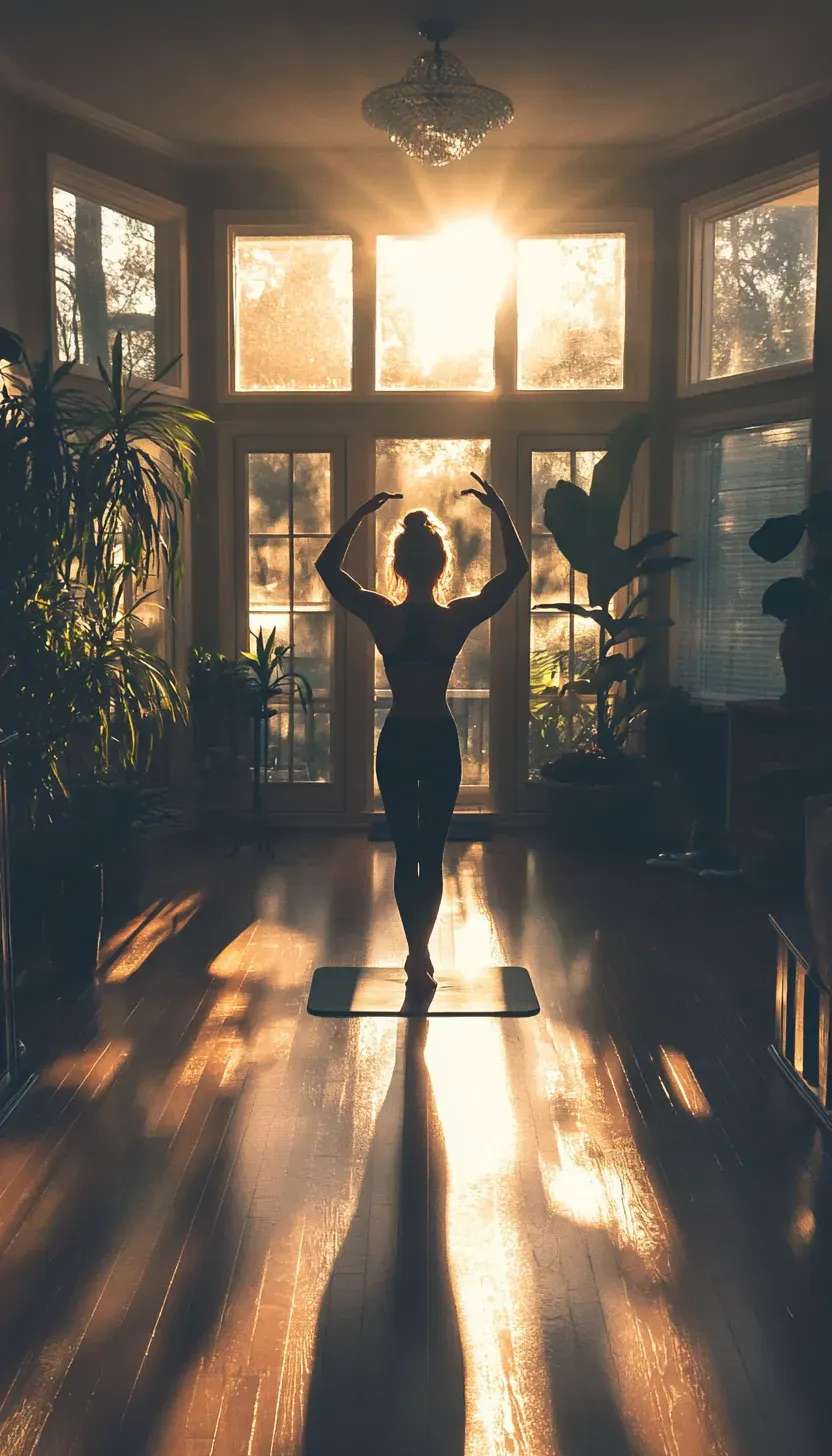5 Essential Vinyasa Flow Yoga Poses for Beginners
Table of Contents
- Introduction to Vinyasa Flow Yoga
- Benefits of Vinyasa Flow for Beginners
- Mountain Pose: Grounding and Stability
- Downward-Facing Dog: Strength and Stretch
- Warrior I: Empowering Your Practice
- Child’s Pose: Rest and Recovery
- Cobra Pose: Opening the Heart
- Transitioning Between Poses Smoothly
- Tips for Practicing Vinyasa Flow Safely
- Start Your Yoga Journey Today
Introduction to Vinyasa Flow Yoga
Vinyasa Flow Yoga is more than just a series of poses; it's a dynamic dance between breath and movement. This practice encourages a seamless transition from one posture to another, creating a rhythmic flow that enhances physical strength and flexibility and cultivates mindfulness.
Each inhale and exhale invites you to connect deeply with your body, fostering a sense of awareness that can extend beyond the mat into daily life.
What sets Vinyasa apart is its adaptability; practitioners can customize their sequences to suit their energy levels and personal intentions. Whether you're seeking to invigorate your spirit or find serenity after a long day, Vinyasa Flow offers a versatile approach to yoga that can meet you where you are.
As you embrace this fluid practice, you'll discover how each pose can become a tool for self-exploration, inviting you to listen to your body's unique rhythm and express yourself in new ways.
Benefits of Vinyasa Flow for Beginners
Vinyasa Flow yoga offers a dynamic and engaging way for beginners to cultivate physical strength, flexibility, and mindfulness. One of the standout benefits of this practice is its ability to synchronize breath with movement, creating a meditative flow that helps clear the mind.
This rhythmic connection not only enhances focus but also fosters a deeper awareness of one's body, encouraging practitioners to listen to their physical needs and limitations as they explore various poses.
Moreover, Vinyasa Flow is highly adaptable, making it accessible for individuals of all fitness levels. Beginners can easily modify poses and transitions, allowing them to build confidence at their own pace while still experiencing the invigorating benefits of a full-body workout.
As practitioners gain proficiency, they may find themselves more inclined to experiment with more challenging variations, fostering a sense of accomplishment and personal growth.
Ultimately, Vinyasa Flow serves as a beautiful gateway for newcomers to develop a sustainable yoga practice that nurtures both body and spirit.
Mountain Pose: Grounding and Stability
The downward-facing dog is more than just a transitional pose; it's a powerful blend of strength and stretch that rejuvenates both the body and mind.
As you press your palms firmly into the mat and lift your hips skyward, you're engaging key muscle groups: shoulders, arms, and core, while simultaneously elongating the spine and hamstrings.
This dual action cultivates a sense of balance, grounding you in the present moment while opening up pathways of energy throughout your body.
What makes the downward-facing dog particularly enriching is its ability to promote mindfulness through breath. Each inhale invites space into your body, while each exhale deepens your stretch and releases tension.
This rhythmic flow fosters a connection between movement and breath, enhancing your overall practice.
Plus, the pose serves as a gentle inversion, encouraging blood flow to the brain and providing a fresh perspective, literally! Embrace this pose not just as a physical challenge but as an opportunity to cultivate resilience, both on and off the mat.
Downward Facing Dog: Strength and Stretch
The downward-facing dog is often hailed as a cornerstone pose in Vinyasa Flow, embodying a harmonious blend of strength and stretch that invigorates both body and mind.
As you transition into this pose, your hands anchor into the mat, grounding you while your feet press back, creating a powerful triangular shape.
This position not only strengthens your arms, shoulders, and core but also opens up the spine, hamstrings, and calves, fostering a deep sense of release.
It’s a dynamic pose that encourages you to engage your muscles while simultaneously inviting them to lengthen, embodying the essence of balance in yoga.
Beyond its physical benefits, the downward-facing dog serves as a moment of pause in your flow. The inversion offers a fresh perspective, quite literally turning your world upside down and allowing for introspection.
As you breathe deeply in this pose, visualize the stress and tension melting away, replaced by a renewed energy that propels you forward in your practice.
Each exhale can be an invitation to surrender deeper into the stretch, while each inhale invites strength and resilience, reminding you that yoga is not just about flexibility but also about cultivating inner fortitude.
Embrace this pose as a reminder that strength and vulnerability coexist beautifully on the mat.
Warrior I: Empowering Your Practice
Warrior I, or Virabhadrasana I, serves as a powerful anchor in your Vinyasa flow practice, instilling both strength and stability.
As you step into this pose, envision yourself embodying the fierce spirit of a warrior, ready to face any challenge that comes your way.
The grounded stance, with one foot firmly planted forward and the back heel pressed into the mat, creates a solid foundation that encourages confidence and resilience.
This posture opens the hips and chest while elongating the spine, inviting an expansive breath that invigorates both body and mind.
Beyond its physical benefits, Warrior I cultivates a sense of empowerment that extends off the mat. Each time you rise into this pose, you’re not just building muscle but also nurturing a mindset of courage and determination.
Focus your gaze forward and unwavering, as it symbolizes clarity and intention. Embrace the energy coursing through your limbs; let it remind you that strength is not just about physical prowess but also about mental fortitude.
As you flow through your practice, allow Warrior I to become your touchstone, a reminder that you are capable of overcoming obstacles, both on and off the mat.
Child’s Pose: Rest and Recovery

The child’s Pose, or Balasana, is often regarded as a sanctuary within the practice of yoga, a gentle retreat that invites both rest and recovery.
As you sink into this pose, your body finds solace in the grounding connection with the mat, allowing your mind to release the day's stresses.
The soft folding of your torso over your thighs creates a cocoon-like effect, fostering a sense of safety and tranquility that encourages introspection and deep breathing.
This restorative posture not only calms the nervous system but also provides an opportunity for self-reflection. As you breathe deeply, imagine each inhale filling you with fresh energy while every exhale releases tension and anxiety.
Child's Pose can be particularly beneficial after a vigorous Vinyasa flow, offering a moment to reconnect with your body and mind.
Embrace this pose as more than just a resting point; let it serve as a reminder that slowing down is just as vital as movement in your yoga journey.
Cobra Pose: Opening the Heart
Cobra Pose, or Bhujangasana, serves as a profound invitation to open the heart, both physically and emotionally.
As you lie prone on your mat, pressing your palms into the ground and gently lifting your chest, you create a powerful stretch across the front of your body.
This action not only strengthens the spine but also encourages deeper breaths, expanding the ribcage and allowing your heart to blossom open.
It’s a reminder that vulnerability can be a source of strength; by exposing our hearts, we foster resilience and growth.
Beyond its physical benefits, the Cobra Pose can evoke a sense of empowerment and release. With every inhale, envision yourself drawing in positivity and light, while each exhale dispels tension and self-doubt.
As you practice this pose, it cultivates a connection to your inner self, encouraging you to embrace your authentic emotions.
By regularly incorporating Cobra into your vinyasa flow, you’ll find yourself not just opening your heart but also nurturing a deeper sense of compassion for yourself and others in a beautiful journey of self-discovery that resonates far beyond the yoga mat.
Transitioning Between Poses Smoothly
Smoothly transitioning between poses is an art that elevates your Vinyasa flow, turning each movement into a graceful dance.
Instead of viewing transitions as mere bridges, embrace them as opportunities to deepen your awareness and connection to your breath.
For instance, when moving from Downward Dog to Plank, visualize the energy flowing through your body rather than just shifting positions.
This approach not only enhances your physical practice but also cultivates mindfulness, allowing you to remain present in each moment.
To achieve seamless transitions, focus on aligning your breath with your movements. Inhale as you prepare to shift, and exhale as you execute the change.
This rhythmic synchronization creates a fluidity that transforms your practice into a meditative experience.
Additionally, don’t hesitate to incorporate subtle variations or pauses in your flow; these moments can serve as grounding points, helping you to re-establish your intention and connect more deeply with your body’s sensations.
Remember, the beauty of Vinyasa lies not just in the poses themselves but in the journey between them.
Tips for Practicing Vinyasa Flow Safely
Practicing Vinyasa Flow safely hinges on listening to your body and maintaining awareness of your breath.
As you transition through poses, focus on the rhythm of your inhales and exhales; this connection helps you stay grounded and present.
If you feel any strain or discomfort, don’t hesitate to modify the pose or take a break in the Child’s Pose. Remember, yoga is not about perfection but rather about finding your unique flow.
Incorporating props can also enhance your practice and prevent injury. A yoga block, for instance, can help you reach the ground more comfortably in poses like Triangle or Downward Dog, allowing for a deeper stretch without overstretching.
Additionally, be mindful of your alignment. Engaging your core and maintaining proper form will not only protect your joints but also cultivate strength and stability throughout your practice.
Embrace these adjustments as part of your journey, and you'll find that safety and exploration go hand in hand on your mat.
Start Your Yoga Journey Today
Embarking on your yoga journey can be a transformative experience, opening doors to physical strength, mental clarity, and emotional balance.
Vinyasa flow, with its fluid transitions and rhythmic breath, offers a dynamic way to connect your body and mind. Each pose is not just a physical posture; it's an invitation to explore your limits, cultivate mindfulness, and foster self-compassion.
The beauty of starting with Vinyasa is in its accessibility; whether you're completely new to yoga or returning after a break, this practice encourages you to honor your body’s unique rhythm.
As you step onto your mat for the first time, remember that yoga is less about achieving the perfect pose and more about the journey of self-discovery.
Allow yourself to embrace the wobbles and misalignments as part of the process. Each session is an opportunity to listen deeply to your body, breathe intentionally, and cultivate a sense of presence.
So, take that first step today: roll out your mat, find your breath, and let the flow guide you toward a healthier, more centered version of yourself.
With patience and practice, you'll uncover not just physical benefits but a profound connection to your inner self.
Want to know how to modify vinyasa flow yoga poses for beginners? Check out our post on Navigating Modifications: Adapting Vinyasa Flow Yoga Poses for Beginners
People Also Asked
Q1: What is Vinyasa Flow Yoga?
A: Vinyasa Flow is a style of yoga where movement is linked with breath in a continuous, flowing sequence.
Q2: Is Vinyasa Yoga good for beginners?
A: Yes, it’s adaptable and can be modified to suit any fitness level or experience.
Q3: What are the best beginner Vinyasa poses?
A: Mountain Pose, Downward Dog, Warrior I, Child’s Pose, and Cobra Pose.
Q4: How often should beginners practice Vinyasa Yoga?
A: Start with 2–3 sessions per week and gradually increase based on comfort and progress.
Q5: Do I need to be flexible to start Vinyasa Yoga?
A: No. Flexibility develops over time as you practice consistently.
Q6: What do I need to start Vinyasa Yoga at home?
A: A yoga mat, comfortable clothes, and optional props like blocks or a strap.
Q7: What’s the difference between Vinyasa and Hatha Yoga?
A: Vinyasa focuses on flow and movement; Hatha is slower and holds poses longer.
Q8: Can Vinyasa Yoga help with stress?
A: Yes. Its focus on breath and movement supports stress relief and mental clarity.
Q9: What are common mistakes in beginner Vinyasa Yoga?
A: Rushing through transitions and not focusing on breath or form.
Q10: How do I transition smoothly between poses?
A: Coordinate breath with each movement and stay mindful of alignment.





